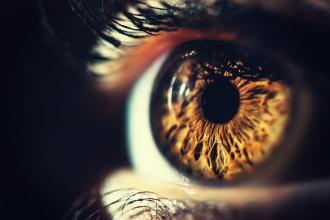Nail-gun eye injuries
Nail-gun eye injuries are a relatively common cause of severe ocular trauma and can take the form of blunt trauma or open-globe injury with penetrating or perforating trauma. These injuries tend to occur in younger individuals with a high risk of subsequent blindness or very poor vision, often accompanied by chronic irritation and pain. Between 2009 and 2018, 198 WorkSafeBC claims were accepted for nail-gun-related injuries. The injured workers were a mean age of 34 years, most were males, and 75% were employed in a construction trade.
Pneumatic nail guns, which are relatively easy to use and can significantly increase productivity, are commonly used in the construction industry. The gun fires a nail, which, at high velocities of up to 160 km per hour, can act as a missile. The nail can injure the eye directly, via ricochet after striking a hard surface or metal, or the gun might backfire or jam. These guns are controlled by a finger trigger and a contact safety tip.
Diagnosis
On presentation, obtain a careful history and assess visual acuity. In a high percentage of cases, the nail may have lodged firmly in the eye. Often, however, the worker removes the nail from the eye at the worksite. Initial slit lamp examination may reveal a sclera or corneal penetration, often including prolapsed uveal tissue; hyphema, iris tears including iridodialysis (the iris is disinserted from its root), or lens trauma. An intraocular foreign body may be detected by CT scanning or, in selected cases, by gentle ultrasonography, taking care not to put pressure on the eye.
Treatment
Treat the patient with anti-tetanus, if required, and intravenous antibiotics. Arrangements should be made for urgent examination under anesthesia.
If the injured worker has not removed the nail, it should be surgically removed from the eye as gently as possible, followed by primary suturing of sclera or corneal wounds. Prolapsed uveal tissue may need to be reposited or excised. If there is marked lens damage, primary lensectomy may be necessary. Subsequently, the patient will need to be assessed by vitreoretinal services. Common posterior segment complications include hemorrhagic choroidal or retinal detachment. Pars plana vitrectomy, with or without gas or silicone oil, may be required. Retinal tears may need to be surrounded by laser.
Secondary complications may ensue that require further surgery such as penetrating keratoplasty for corneal scars, cataract extraction, and glaucoma valve implant for secondary glaucoma. Scar tissue may form in the vitreous gel or on the retina (proliferative vitreoretinopathy) causing tractional retinal detachment, often requiring multiple surgeries. Visual results may be poor.
Prevention
Nail-gun injuries can be prevented with strict adherence to established safety measures, including proper training and education of nail-gun operators. Some studies have found a high percentage of nail-gun injuries among workers from overseas with poor English-language skills.
Wearing safety glasses and a hard hat are mandatory, and workers must not disable safety features of the gun to increase speed.
The risk of nail-gun injury is doubled when a multiple-shot contact trigger is used rather than a single-shot sequential trigger. The latter forces the worker to push the safety tip against the wood and then pull the trigger to shoot one nail, whereas the former allows the worker to squeeze the trigger before pushing in the safety tip, resulting in “bump” firing.
All nail-gun injuries at work must be reported. Nail guns are useful tools to increase productivity, but they are also potentially lethal weapons that need to be treated with respect to prevent life-changing ocular injury.
For more information or assistance with an injured worker with a nail-gun eye injury, contact a medical advisor in your nearest WorkSafeBC office.
—Michael O’Donnell, MD, FRCSC
WorkSafeBC Ophthalmology Specialist Consultant
Additional reading
Burger BM, Kelty PJ, Bowie EM. Ocular nail gun injuries: Epidemiology and visual outcomes. J Trauma 2009;67:1320-1322.
Carral-Santander IE, Acón-Ramirez D, Soberón-Ventura V, et al. Conservative management of penetrating ocular trauma caused by a nail gun. Am J Ophthalmol Case Rep 2018;11:115-118.
Kolomeyer AM, Shah A, Bauza AM, et al. Nail gun-induced open-globe injuries: A 10-year retrospective review. Retina 2014;34:254-261.
Loporchio D, Mukkamala L, Gorukanti K, et al. Intraocular foreign bodies: A review. Surv Ophthalmol 2016;61:582-596.
Naysan J, Rodgers R. Ocular trauma: Automatic nail gun. Ophthalmic Plast Reconstr Surg 2016;32:e98-99.
hidden
This article is the opinion of WorkSafeBC and has not been peer reviewed by the BCMJ Editorial Board.

